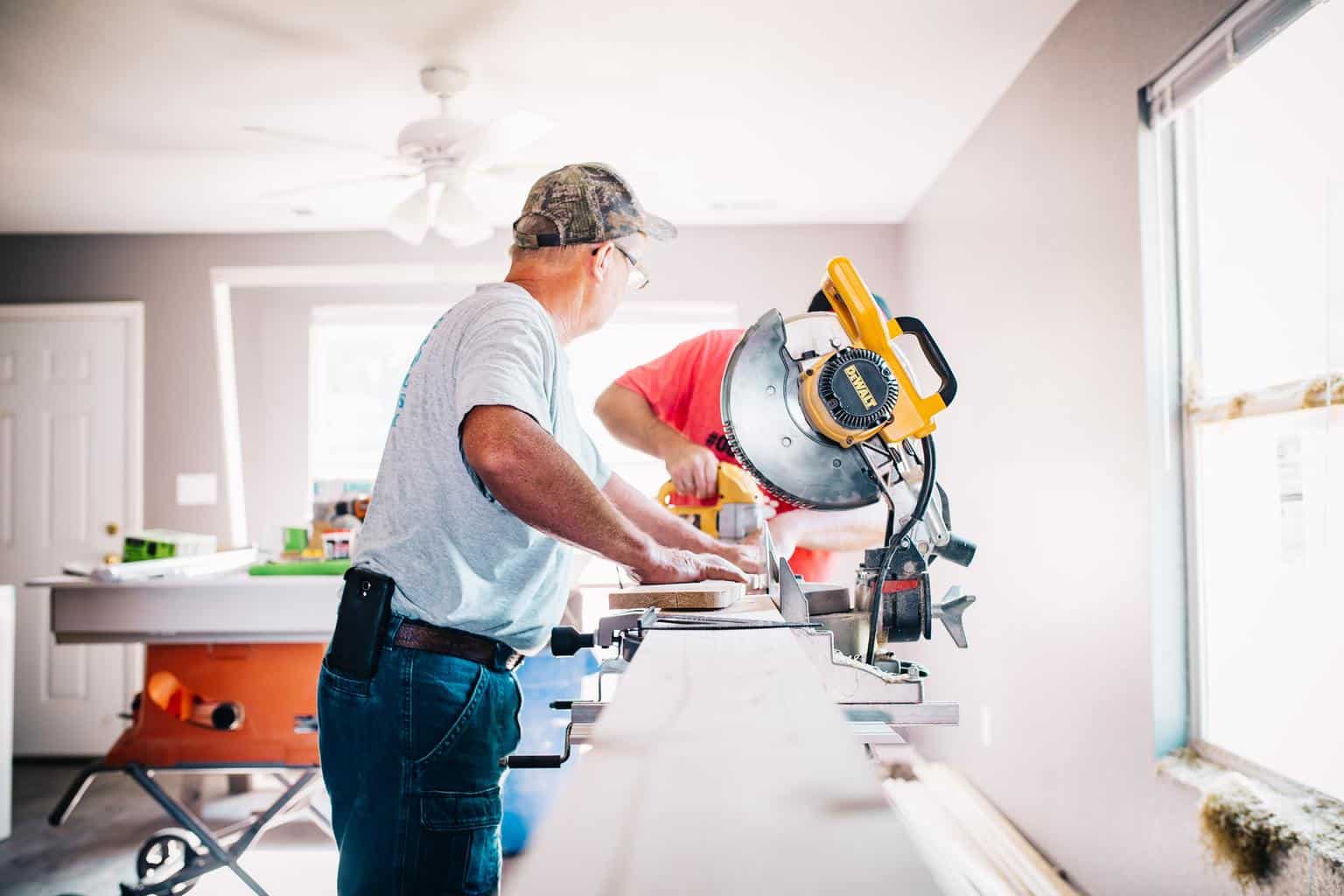Are you wanting to renovate your home but don’t have the cash on hand? You may be considering loan options, but with so many to choose from, you aren’t sure which is best. Or maybe you’re torn between borrowing the funds you need or delaying home improvements until you can save up enough cash.
Either way, you’ll learn when it makes sense to finance home renovations and how the different financing options work in this guide so you can make an informed decision.
Should You Finance Your Home Renovations?
What’s the current condition of your home? Is it in dire need of upgrades to make it safer or more comfortable for your family? Are the home improvement projects so large in scope that it would take several years to save up enough to have them done? Has your family outgrown the space, and a renovation is desperately needed to prevent a move?
If you answered yes to any of these questions, financing your home renovations could be a wise financial decision. Furthermore, you won’t have to exhaust your emergency fund or dip into your retirement savings to make your home suitable for you.
Saving for Home Renovations
Depending on your financial situation and credit health, you may have more than a handful of financing options to consider. However, you should be mindful of several factors as you sift through your choices. These include the desired loan amount, term and monthly payment, your home’s projected after-renovation value and the amount of equity (if any) you have in your home. Saving for a home renovation project leading up to the investment will give you more choices and allow you to save money on interest and fees.
Building a Home Renovation Budget
Homeowners should determine how much they need to spend on their homes before requesting a lump sum from a financial institution. It is a good idea to calculate the average cost per square foot for the type of work you want. For instance, bathroom remodels range from $70 to $250 per share foot. Kitchen remodels can cost $100 to $250 per square foot. On the other hand, a garage rebuild can be more than $80 per share foot on the high end. Homeowners should also compare rates to determine labor costs in their area.
Savings Tips for Home Renovations
These are some of the strategies you can use to save money so you are ready for the project:
- Pay off debt: Getting your credit card balance down to zero will improve your credit score and reduce financial stress. A better score will also help you get a better home improvement loan when you reach out to a financial institution, credit union, or online lender.
- Get a side hustle: You may have heard this before, but the best option for saving up is to increase your income. A smaller side hustle can get you started, but better opportunities come if you look for side hustles that let you scale your earnings.
- Track your expenses: Staying on top of each transaction in your bank account and credit card can lead to fewer expenses. You can then save up more money for a new kitchen or a larger project.
Financing Home Renovations through Personal Loans
Personal loans are typically unsecured and don’t require collateral to get approved, so your home won’t be at risk of foreclosure. However, most come with short repayment periods, often resulting in steep monthly payments. And you’ll need good or excellent credit to qualify for a loan with a low interest rate.
How to Use Personal Loans for Home Renovations
You can receive a lump sum for a personal loan and use the proceeds for a large project. After borrowing the funds, you will then have to make fixed monthly payments for the duration of the loan. You can typically get a personal loan that ranges from 1-7 years. A lengthier loan term reduces your monthly payments.
Eligibility and Application Process
You will need a good credit score to get the best rate and terms. However, some personal loan providers have more generous credit score requirements. Lenders will also check your debt-to-income ratio, which shouldn’t be higher than 35% to 40%.
You will have to provide basic information like your ID, Social Security Number, and proof of income.
Paying for Home Renovations with Credit Cards
Credit cards are useful for their cash rewards, convenience, and other perks. Some people are even using them as replacements for home renovation loans.
Pros and Cons of Using Credit Cards to Fund Renovations
Credit cards allow you to earn rewards for your purchases, and you don’t have to get approval to use your designated credit limit. If you have multiple cards, you may be able to raise enough funds for home renovations.
However, using credit cards for renovations is not a good choice. That’s because these cards have some of the highest interest rates around, which can reach 29.99% APR. Homeowners may want to consider other funding options for their large projects.
Maximizing the Use of Credit Card Rewards
You can earn cash or points back on your purchases, which will reduce how much you owe. Credit cards are arguably the best choice if you can pay off your balance by the end of each month. Rewards are enticing, and you can use a card with the highest points or cashback. However, the rewards aren’t worth it if you only make the minimum monthly payment and let interest accumulate.
Home Equity Loans & Lines of Credit
A home equity loan acts as a second mortgage and lets you borrow a percentage of your equity. However, a home equity line of credit (HELOC) gets you access to a pool of funds that you can borrow from on an as-needed basis during the draw period.
These loan products are only ideal if you have a large amount of equity in your home. Still, you could lose your home if you default on the loan payments.
Understanding Home Equity
The amount of money you can borrow from either of these financing options depends on how much equity you have in your home. You build equity with each monthly mortgage payment and when property values rise. You can calculate your home equity by subtracting your mortgage’s balance from your property’s value.
Benefits and Drawbacks of Home Equity Loans for Renovations
Home equity loans are some of the best types of loans available since you typically end up with a lower interest rate. Unlike unsecured loans, home equity loans and HELOCs use your property as collateral. This dynamic reduces the bank’s risk and results in a lower rate.
However, either of these options results in a second mortgage. You have to keep up with the monthly payments for your mortgage and your HELOC or home equity loan if you pursue this route. You can end up staying in debt for longer and pay more interest in the long run.
Application Process
Mortgage lenders want your basic details just like any other lender. However, they will also want you to do a home appraisal to assess the current value of your property. This appraisal helps them determine how much equity they can tap into for a loan or a line of credit. You will also typically need a 620 FICO score or higher to qualify for financing.
Government-Backed Loans and Grants
The government offers several resources that can give you the funds you need for a home renovation. These are some of the highlights.
Government-Backed Loans for Home Renovations
FHA 203k Rehab Loans are government-backed (by the Federal Housing Administration) and allow you to borrow up to 96.5 percent of a home’s after-renovation value, capped at FHA loan limits.
Borrowers use these loans to purchase or refinance properties, but you must work with an approved FHA lender. Furthermore, they call for a substantial amount of paperwork and contractor involvement. Delays are also common with FHA 203k Loans. Interest rates are relatively high, and you’ll pay mortgage insurance for the life of the loan.
The USDA and VA have similar programs that offer financing for borrowers who need to make repairs. The maximum home renovation loan from the USDA is $40,000. VA home renovation loans have the same requirements as traditional VA loans. You will typically need a 620 credit score or higher.
Applying for Government Grants
The government has several grants available for people who need financing through its home repair assistance programs. You can compare programs and see if you qualify for them. Grants are the best choice for receiving funds since you do not have to repay a grant.
Refinancing Your Mortgage to Fund Renovations
Refinancing gives you many choices. You can get out of debt sooner, reduce your rate, and do other things with a refinance. However, people looking for extra funds will want to use a cash-out refinance.
How Mortgage Refinancing Works
A cash-out refinance lets you convert a portion of your equity, typically up to 80 percent, into cash and refinance your current mortgage. To illustrate, if your home is worth $350,000 and you owe $215,000 on the mortgage, you could qualify for up to $65,000 ($350,000 * .80 – $215,000). The lender will disburse the $65,000 to you at closing and pay off your current loan. You’ll get a loan with new terms for $350,000 and make payments to your new lender.
While you could get access to a large amount of cash, the downside is you could get a higher interest rate on your mortgage. Plus, your new mortgage payment could be on the high end and stretch your budget way too thin.
Benefits and Drawbacks of Mortgage Refinancing for Renovations
A mortgage refinance can give you the necessary capital for home upgrades without taking on a second mortgage. You can extend the duration of your loan to minimize your monthly payments as well.
However, a mortgage refinance is expensive. You’ll have to pay closing costs for your new mortgage, and you may be subject to prepayment penalty fees for your current mortgage. The costs can add up, and you will stay in debt longer. Changing the rate and terms of your present mortgage may also be unfavorable if you manage to secure a low rate.
Steps to Refinance Your Mortgage
These are the steps you can take to refinance your mortgage.
- Step 1: Calculate how much you need
- Step 2: Compare lenders
- Step 3: Gather the necessary documents
- Step 4: Submit your application
- Step 5: Go through the underwriting process and get a home appraisal
- Step 6: Close on your new mortgage
How to Pay for Home Renovations: The Bottom Line
Ultimately, deciding how to pay for home renovations is a personal decision. If you’ve saved up a hefty sum of cash, you can move forward without worrying about monthly payments. But if you need to finance home renovations, carefully weigh the pros and cons of each option.







